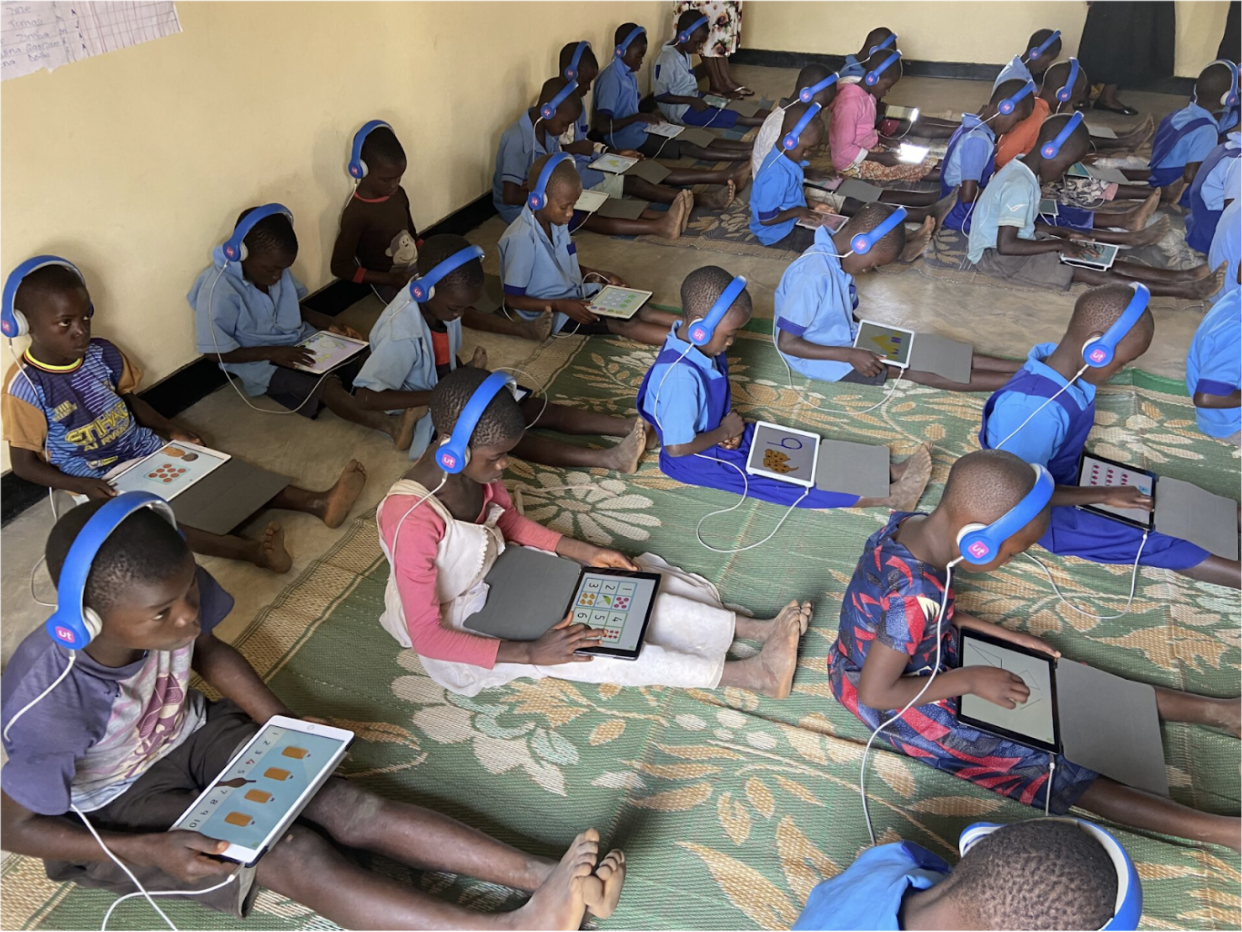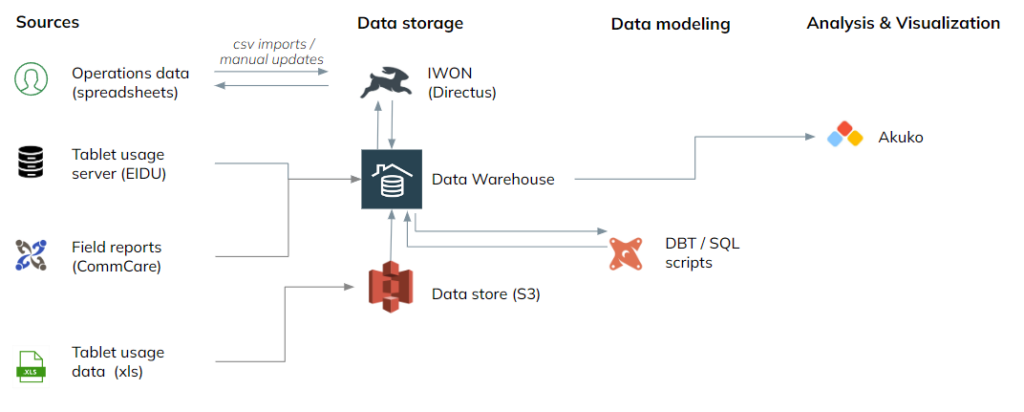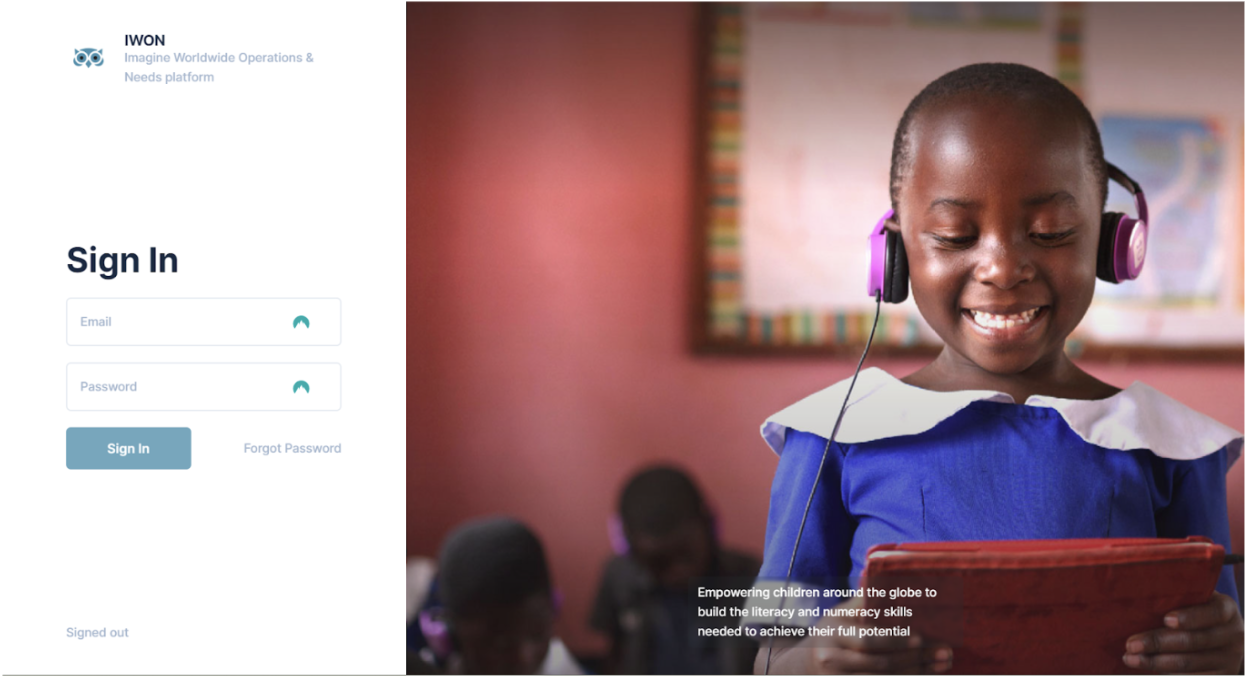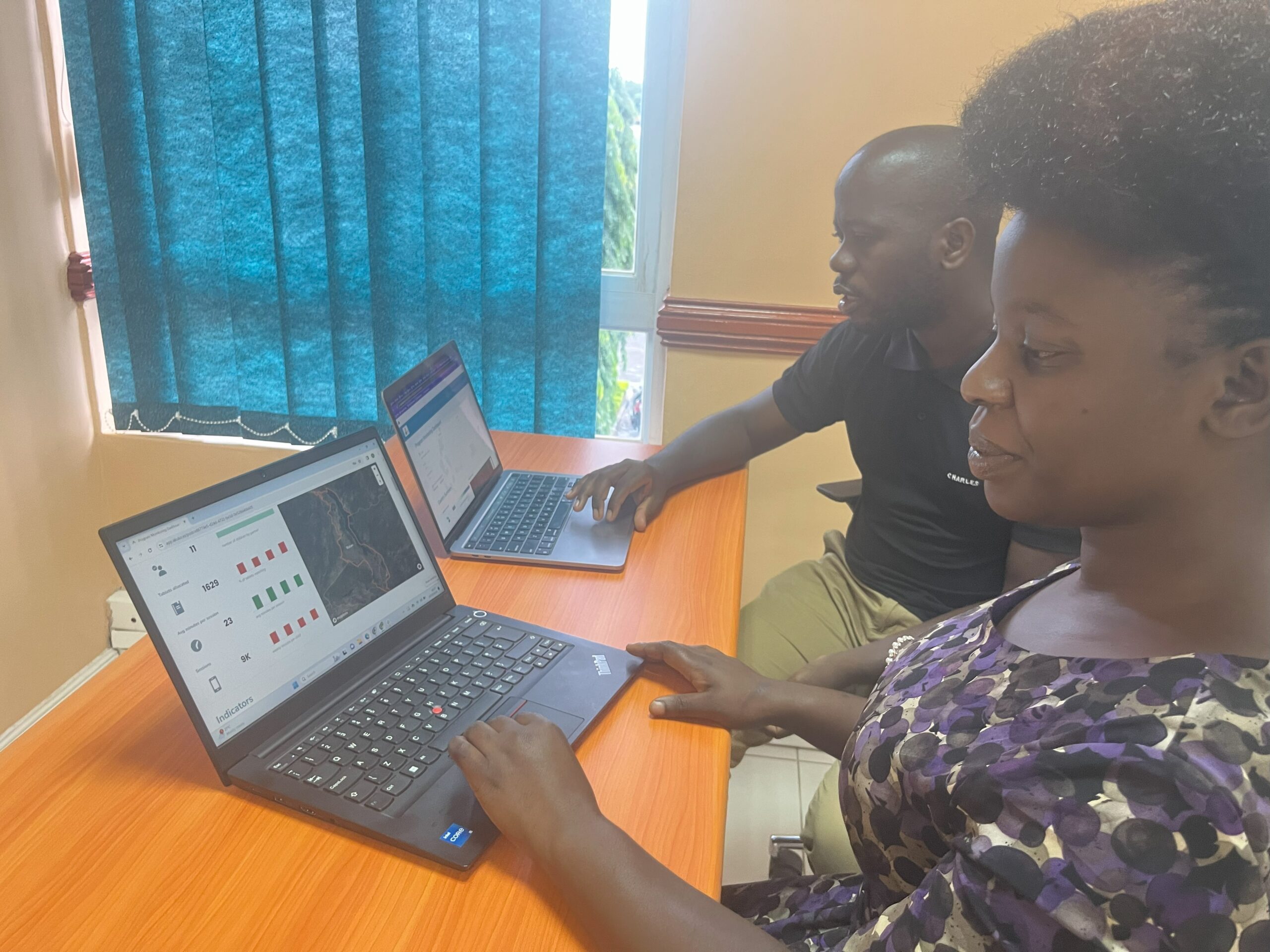Modern technology to educate millions of children with Imagine Worldwide

Education is one of the best ways for children to escape poverty and build a better future. In the past decades, governments and organizations operating in the Global South have invested in increasing school attendance, especially in primary education. While attendance rates have increased significantly, getting children to master even basic skills remains a challenge: 9 in 10 children in Africa are not able to read effectively, even though many of them attend school. For education to truly succeed, we need to not only get children into the classroom but also improve what happens in the classroom.
One way to unlock better learning is to improve the personalized support that each child gets during the school day. Hiring a multitude of teachers can help, but it is often not an option with public schools that are often overcrowded and underfunded. That’s where technology can help.
We’re excited to partner with Imagine Worldwide (often shortened to Imagine), an award-winning NGO offering e-learning to children in the most underserved areas. Imagine collaborates with Ministries of Education and local NGOs to distribute tablets in primary schools and embed tablet-learning in the school curriculum. Children can use the tablets for roughly an hour a day to drive their own learning, achieving measurable gains in literacy and numeracy, with the added benefits of increased school attendance and exposure to modern technology.

Children using tablets for self-directed learning. Image courtesy of Imagine Worldwide
In its flagship program BEFIT (Building Education Foundations through Innovation & Technology), Imagine is supporting the Government of Malawi to distribute e-learning tablets and solar systems in all primary public schools in Malawi, expecting to reach over 3.8 million children annually by 2029. The program is so transformative for the country that it was recently mentioned by Malawi President Chakwera in his latest State Of National Affairs address.
Where does Ona fit into all of this? With its growing scale, Imagine needed a way to manage the vast amounts of data generated throughout their operations, and especially from the hundreds of thousands of tablets being used in their programs.
The technical challenge: building an integrated system to manage IoT devices and operations
Imagine began collaborating with Ona back in 2021, when they started using Ona Data to enable digital data collection from the field. In order to fully understand how the programs were progressing, Imagine needed to combine data from the field with data from other systems and from the tablets themselves. They engaged Ona’s Data Solutions services to create a fit-for-purpose Management Information System (MIS) that could organize all their data and create actionable reports for program teams.
The Ona-developed MIS has evolved over the years and in its current form allows Imagine to combine information such as school locations and enrollments, tablet usage data, inventory provided to schools, and feedback from field staff monitoring school learning sessions. Instead of building a large, expensive, and bespoke system, Ona’s solution follows the principles of the modern data stack: take world-class off-the-shelf components and integrate them with the specific business logic for the organization.
 Imagine MIS system architecture
Imagine MIS system architecture
The MIS has several noteworthy components:
- IWON, a data application to store operational master data. The Imagine Worldwide Operations Needs (IWON) platform allows Imagine staff to record everything related to the administration of their programs. Through a simple interface, users can register new schools, assign tablets to schools, and assign staff to monitor the program in various locations. The app is powered by the Directus data platform, with a custom database design that evolves with the programs.
- Custom data processing logic to handle big data. Imagine runs a network of Internet of Things (IoT) devices, with thousands of tablets sending anonymous data every day. The goal is to track how much the tablets are used in each school in order to maximize the learning and improve the software over time. This results in massive datasets being generated, which require integrating with data from IWON and other MIS components. Integration is done via custom logic and executed using dbt, a SQL-first transformation workflow that enables modular and reusable analytics engineering.
- Self-service data dashboards via Akuko. Using Akuko, Ona’s inhouse data visualization platform, Imagine has access to a set of standardized dashboards and reports with pre-computed metrics and analyses that are relevant to their needs. On the same platform, the team can also investigate the data directly and gain further insights by creating their own custom dashboards and sharing the results both internally and with specific stakeholders.
 Login screen for IWON. Imagine Worldwide’s internal data platform
Login screen for IWON. Imagine Worldwide’s internal data platform
The collaborating evolution: Collaborating with the team to meet the right needs at the right time
 Staff in Malawi gaining insights from Akuko dashboards. Image courtesy of Imagine Worldwide
Staff in Malawi gaining insights from Akuko dashboards. Image courtesy of Imagine Worldwide
As previously mentioned, Ona’s engagement with Imagine started with Ona Data and shifted when they reached out for a more complete solution. What makes this partnership most productive is that it has evolved along two distinct tracts: implementing the right technology at the right time, and changing the services required to complement the technology.
Evolving the technology means that Imagine’s MIS is not a static application, but an evolving set of components to match the changing needs of the programs. One example is Ona Data no longer being used in all of Imagine’s programs for data collection and being replaced by a CommCare application in some countries. The human-centered approach to solution design enables this flexibility, adding and removing components to match the different levels of scale and specific needs within Imagine’s projects.
Even more interestingly, our advisory services changed over time. Initially, Ona’s consultants were deeply involved in creating reports needed for business stakeholders. Nowadays, Imagine has an internal team that has received extensive capacity building and is among the most skilled Akuko users we have. Ona’s consultants are still embedded in the project, but help only on the more challenging tasks: creating new complex metrics, integrating new data sources, or troubleshooting difficult errors. Instead of being a technology vendor, Ona has become a partner in Imagine’s data management practices. Over time, we may reduce our involvement to the point where Imagine is independent in their data processes and graduate from our consulting program.
Becoming data driven is a process, and for us it is a pleasure to support organizations in every step of that journey — especially when the work they do is as impactful as Imagine’s. We couldn’t be more proud and grateful for the opportunity to work on this important problem, and we look forward to helping Imagine reach millions of kids in the future.
“Ona’s tools have significantly improved our data collection process, boosting both efficiency and accuracy. Their tailored forms enable seamless real-time data gathering from our field officers, reducing manual entry and error rates.
Furthermore, Ona’s intuitive interface allows for easy dashboard customization, granting us control over permissions, facilitating bulk uploads, and minimizing data entry errors. Their data visualization tool, Akuko, is instrumental in analyzing complex datasets, aiding in informed decision-making, and enhancing communication with our stakeholders.”
— Opheley Salihu , Scale Operations Senior Manager, Imagine Worldwide

